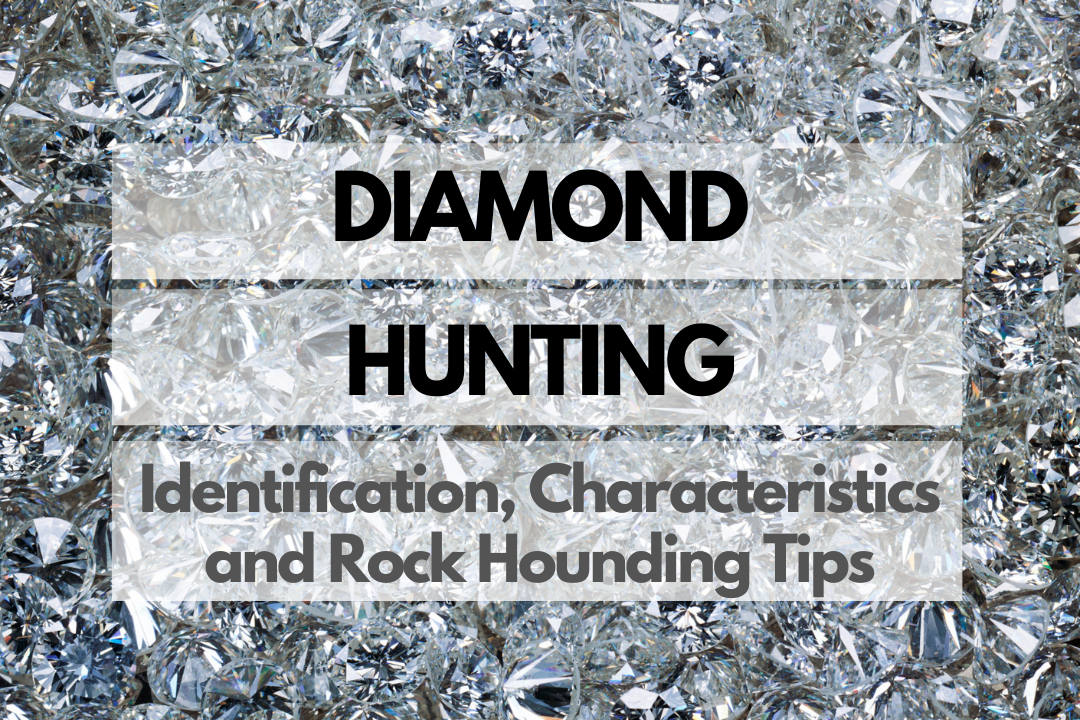Embark on a dazzling adventure to discover the world of diamond hunting! Unearth these precious gems and learn about their unique characteristics, identification, and history. Get ready for an exciting and engaging journey into the sparkling realm of diamonds.
History & Origin of Diamond
Diamonds have captivated human imagination for centuries, valued for their beauty and rarity. These precious stones were first discovered in India over 2,500 years ago. The name “diamond” is derived from the ancient Greek word “adámas,” meaning “unbreakable” or “invincible,” capturing the essence of this incredibly hard and durable gemstone. Throughout history, diamonds have held various cultural significances, often symbolizing wealth, power, and love. Today, they continue to be cherished as the ultimate symbol of eternal commitment in engagement rings and fine jewelry.
Diamond Identification & Physical Properties
Identifying a diamond requires an understanding of its unique physical properties. The following table provides an overview of these properties:
| Property | Description |
|---|---|
| Chemical Formula | C (Carbon) |
| Crystal System | Cubic |
| Refractive Index | 2.417 – 2.419 |
| Specific Gravity | 3.50 – 3.53 |
| Cleavage | Perfect |
| Luster | Adamantine |
Diamond Colors
Diamonds come in a range of colors, from colorless or “white” diamonds to fancy colored diamonds in hues such as yellow, brown, blue, green, pink, and even red. The color of a diamond is primarily determined by the presence of trace elements and lattice defects within the crystal structure.
Diamond Hardness
Diamonds are known for their exceptional hardness, scoring a perfect 10 on the Mohs hardness scale. This makes them the hardest known natural substance, and their resistance to scratching contributes to their enduring beauty and value.
Diamond Types
There are several types of diamonds, which can be categorized based on their composition and the presence of trace elements and inclusions.
Type Ia
Type Ia diamonds are the most common type, accounting for approximately 95% of all natural diamonds. They contain trace amounts of nitrogen, which can cause a yellow or brown hue. Nitrogen atoms in these diamonds are typically aggregated into groups, resulting in a less intense color compared to Type Ib diamonds.
Type Ib
Type Ib diamonds are much rarer, making up less than 0.1% of natural diamonds. They have a higher concentration of nitrogen atoms dispersed throughout the crystal lattice, giving them a more intense yellow or brown color. Some famous Type Ib diamonds include the Hope Diamond and the Allnatt Diamond.
Type IIa
Type IIa diamonds are relatively rare, representing about 1-2% of all natural diamonds. They are almost entirely free of nitrogen, resulting in exceptional clarity and a colorless or “white” appearance. Some of the most famous and valuable diamonds in the world, such as the Cullinan and the Koh-i-Noor, are Type IIa diamonds.
Type IIb
Type IIb diamonds are extremely rare, accounting for less than 0.1% of all natural diamonds. They contain trace amounts of boron, which gives them a distinctive blue or gray color. The famous Hope Diamond is an example of a Type IIb diamond.
Diamond Uses
Diamonds have a variety of uses, including:
- Jewelry: Diamonds are highly valued for their beauty and durability, making them the ultimate choice for engagement rings, necklaces, earrings, and other fine jewelry.
- Industrial applications: Due to their hardness, diamonds are used as cutting, drilling, and grinding tools for a wide range of industries.
- Scientific research: Diamonds are used as high-pressure anvils in laboratory experiments, and their unique properties make themideal for various scientific applications, including semiconductors and electronics.
How Much Is Diamond Worth?
The value of a diamond can vary greatly depending on its size, color, clarity, and cut. Prices can range from as low as $500 per carat for lower-quality stones to over $60,000 per carat for exceptionally rare and high-quality diamonds. It’s important to note that diamonds are often evaluated using the “4 Cs”: carat weight, cut, color, and clarity, which all contribute to the overall value of the gemstone.
Diamond Rock Hounding Tips
Ready to start your diamond hunting adventure? Follow these tips and tricks to ensure a successful and enjoyable experience!
Essential Tools and Equipment
Having the right tools and equipment is crucial for a successful diamond hunting expedition. Some essential items to bring along include:
- Durable gloves: Protect your hands from sharp rocks and dirt.
- Shovel and trowel: Useful for digging and moving soil to uncover hidden gems.
- Sieve or screen: Helps to separate diamonds from the surrounding dirt and gravel.
- Jeweler’s loupe or magnifying glass: Useful for inspecting potential diamonds up close.
- Small container or ziplock bags: Keep your finds safe and secure.
- Sturdy backpack: Carry your tools and any diamonds you discover.
Safety Tips
Staying safe while diamond hunting is essential. Keep these safety tips in mind:
- Wear appropriate clothing and footwear: Choose sturdy shoes or boots and dress in layers for varying weather conditions.
- Bring sunscreen, a hat, and sunglasses: Protect yourself from harmful UV rays.
- Stay hydrated: Bring plenty of water and take breaks to avoid dehydration.
- Know your limits: Do not overexert yourself, and rest when needed.
- Be aware of your surroundings: Watch for potential hazards such as slippery surfaces, loose rocks, or wildlife.
Diamond Hunting: Where to Find Diamond
Diamonds can be found in various locations around the world, but some of the best places to hunt for diamonds include volcanic pipes, alluvial deposits, and diamond mines that offer public access. The following table provides specific details on where to find diamonds in different countries:
| Site/Area | City/State/Country |
|---|---|
| Crater of Diamonds State Park | Murfreesboro, Arkansas, USA |
| Kimberley Diamond Mines | Kimberley, Northern Cape, South Africa |
| Argyle Diamond Mine | East Kimberley, Western Australia, Australia |
| Ekati Diamond Mine | Northwest Territories, Canada |
| Orapa Diamond Mine | Orapa, Botswana |
Caring For Your Diamond
Proper care is essential to maintain the beauty and value of your diamonds. Clean your diamonds regularly using a gentle jewelry cleaner or a mixture of warm water and mild soap. Avoid using harsh chemicals or abrasives that could damage the surface. Store your diamonds separately from other jewelry to prevent scratching and chipping.
Additional Resources
Looking for more information on diamond hunting? Explore these helpful resources:
- United States Geological Survey (USGS): Learn about geology, mineral resources, and more from this US government agency.
- Mindat.org: A comprehensive database of minerals, rocks, and mining information.
- RockTumbler.com Blog: A blog featuring rock hounding tips, locations, and more.
- Gemology Online: A forum where you can discuss gemstones, identification, and more with fellow enthusiasts.
- Books: Check out titles like “Gem Trails of the United States” or “Rockhounding: A Guide to the World’s Best Rockhounding Sites” for in-depth information on diamond hunting locations and techniques.
Additional Diamond FAQs
Here are some frequently asked questions about diamonds that we haven’t covered yet:
What are the benefits of Diamond?
Diamonds offer a range of benefits, including their beauty,durability, and value. As the hardest naturally occurring substance on Earth, diamonds are ideal for use in jewelry, industrial applications, and scientific research. Additionally, diamonds symbolize love, commitment, and status, making them a popular choice for engagement rings and other special occasions.
Do Diamond have any healing properties?
While there is limited scientific evidence to support the notion of healing properties in diamonds, they have been associated with various metaphysical benefits throughout history. Some people believe that diamonds can increase energy, enhance mental clarity, and promote emotional balance. However, it’s essential to remember that these claims have not been scientifically proven and should be approached with skepticism.
Do Diamond have any spiritual meaning?
In various spiritual and metaphysical traditions, diamonds are associated with purity, clarity, and transformation. They are often seen as symbols of spiritual growth, enlightenment, and the divine light within each individual. However, these interpretations can vary greatly depending on one’s personal beliefs and cultural background.
Do I need a permit to go Diamond hunting?
Permit requirements for diamond hunting can vary depending on the location and specific circumstances. In the United States, for example, you do not need a permit to search for diamonds at Crater of Diamonds State Park in Arkansas. However, it’s essential to familiarize yourself with local regulations and restrictions before embarking on a diamond hunting adventure. For more information on permits, visit the Bureau of Land Management (BLM) website.
Closing Thoughts
Diamond hunting is an exciting and rewarding adventure that combines outdoor exploration with the thrill of discovery. With the right tools, safety precautions, and knowledge of where to find these precious gems, you’ll be well on your way to unearthing hidden treasures. So, gather your equipment, brush up on your diamond hunting techniques, and set out on your very own rock hounding expedition! Who knows, you might just find the diamond of your dreams!

